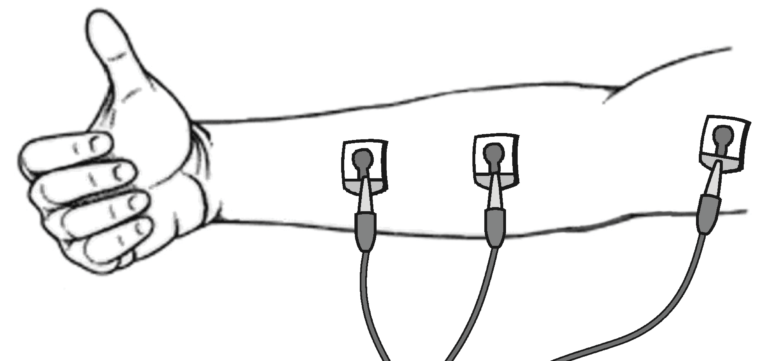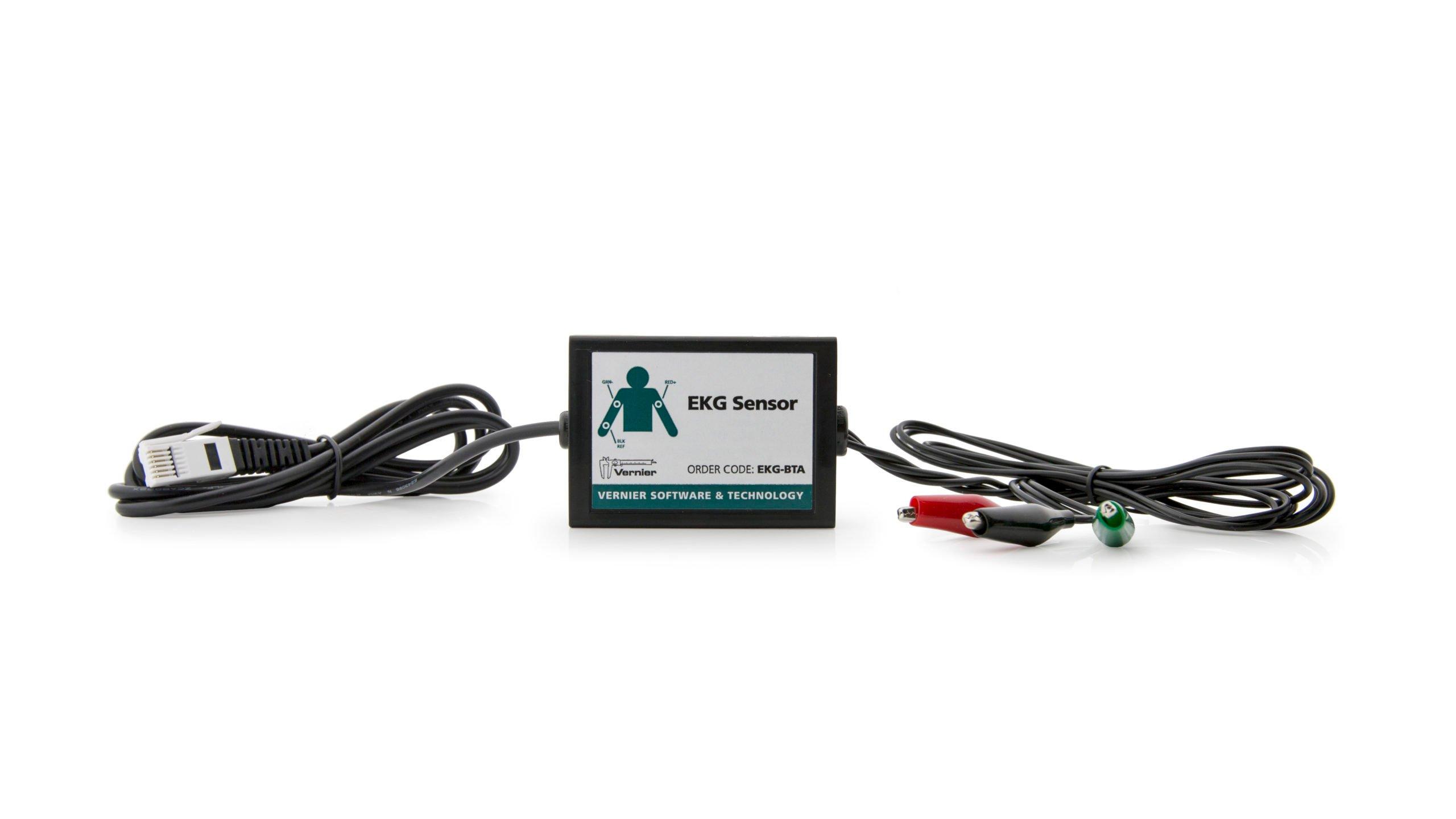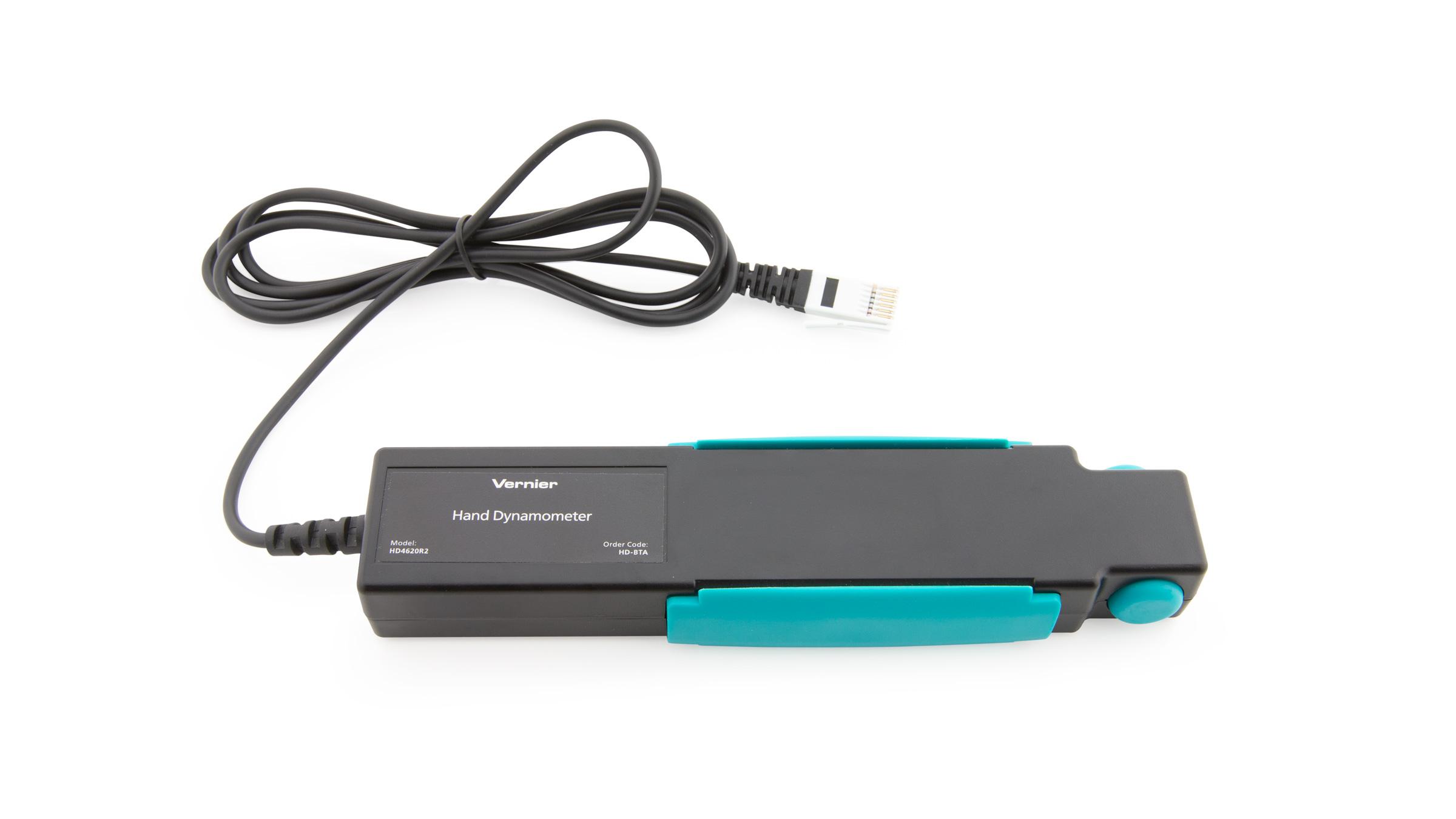
Introduction
Voluntary muscle contraction is the result of communication between the brain and individual muscle fibers of the musculoskeletal system. A thought is transformed into electrical impulses which travel down motor neurons (in the spine and peripheral nerves) to the neuromuscular junctions that form a motor unit.
The individual muscle fibers within each motor unit contract with an “all or none” response when stimulated, meaning the muscle fiber contracts to its maximum potential or not at all. The strength of contraction of a whole muscle depends on how many individual fibers are activated, and can be correlated with electrical activity measured over the muscle with an EMG sensor.
Objectives
In this experiment, you will
- Obtain graphical representation of the electrical activity of a muscle.
- Correlate grip strength measurements with electrical activity data.
- Correlate measurements of grip strength and electrical activity with muscle fatigue.
- Observe the effect on grip strength of a conscious effort to overcome fatigue.
Sensors and Equipment
This experiment features the following sensors and equipment. Additional equipment may be required.
Ready to Experiment?
Ask an Expert
Get answers to your questions about how to teach this experiment with our support team.
- Call toll-free: 888-837-6437
- Chat with Us
- Email support@vernier.com
Purchase the Lab Book
This experiment is #18 of Human Physiology with Vernier. The experiment in the book includes student instructions as well as instructor information for set up, helpful hints, and sample graphs and data.



